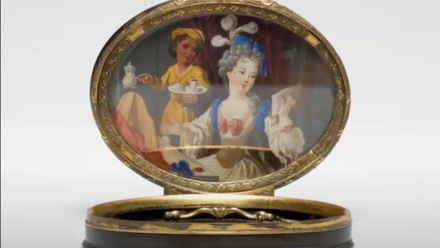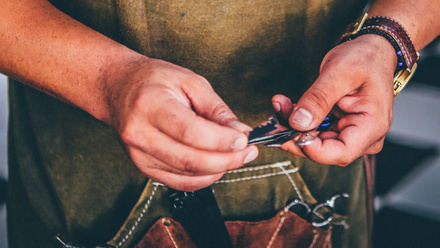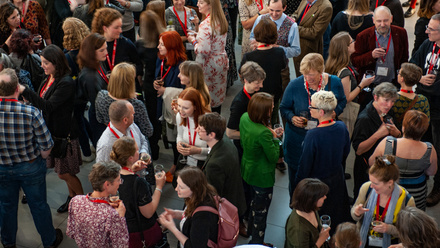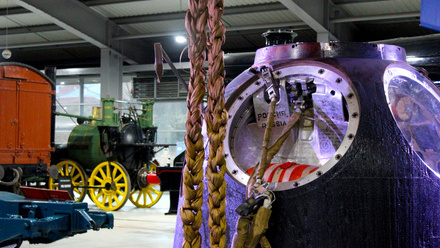5 Ways for a Museum and Heritage Professional to Engage with LGBT Pride Month
Icon student member Shoun Obana is studying the MA in the Conservation of Archaeological and museum Objects at Durham University. Below, Shoun shares 5 ways to engage with Pride Month.
1. Visit an LGBTQ+ exhibition
- Visit and support Queer Britain, the UK’s first national LGBTQ+ museum at Granary Square, London.
- ‘We Get to Choose Our Families’ at the Whitechapel Gallery is an exhibition organised by trans and non-binary curators. It explores the idea of chosen families as a response to the oppression faced by LGBT+ communities.
- ‘Fashioning Masculinities: The Art of Menswear’ at the V&A. At a moment of creativity in men's fashion and gender fluidity, the exhibition explores how designers, tailors, and artists have constructed and performed masculinity.
- ‘Let Me Hold You’ by Michaela Yearwood-Dan at Queercircle refuses the binary expectations of racial or gendered notions of collective identity and history. A sweeping curved mural creates a sanctuary for visitors allowing them to confront their true selves in a safe and holistic space.

2. Engage with LGBTQ+ heritage
- Explore Historic England’s LGBTQ+ Heritage Project ‘Pride of Place’ which uncovers and celebrates places of LGBTQ+ heritage across England.
- Visit the LGBTQ+ Archive at the Bishopsgate Institute, one of the most extensive collections on LGBTQ+ history, politics, and culture in the UK.
- ‘Queer beyond London’ is an AHRC-funded collaboration between Leeds Beckett University and Birkbeck College, University of London. It researches the histories of sexual identities and communities in Leeds, Plymouth, Brighton, and Manchester since 1965.
- Read about ‘Queer Pandemic: Resilience in Times of Crisis’, a video-based oral history project collecting stories about the experiences and resilience of LGBTQ+ people in the UK in the era of Covid-19. It is a collaboration between the Centre for Queer History at Goldsmiths University, Kent State University’s Center for the Study of Gender and Sexuality, and Queer Britain.

3. Inform yourself
- Read a book - Some recommendations include ‘Escape to an Autumn Pavement’ by Andrew Salkey, ‘Trans Britain: Our Journey from the Shadows’ edited by Christine Burns and ‘Rubyfruit Jungle’ by Rita Mae Brown.
- Listen to an LGBTQ+ history podcast. Some examples include ‘History is Gay’, ‘Making Gay History’, ‘Queersplaining’ and episode 6 of series 2 of ‘You're Dead to Me’.
- Follow the National Portrait Gallery’s three-part YouTube film series - In-conversation with LGBTQ+ trailblazers - which reflects on 50 years of pride and the relationship between LGBTQ+ identify and artistic identity.
- Watch a Movie - Some recommendations include ‘Pride’, an historical comedy-drama based on the true story of a group of gay and lesbian activists who raise money to support the families affected by the British miners’ strike of 1984. ‘Ammonite’ is a romantic drama film which is loosely based on the life of palaeontologist Mary Anning and focuses on her romantic relationship with Charlotte Murchison. ‘The Danish Girl’ is a biographical drama loosely based on the lives of the Danish painters Gerda Wegener and Lili Elbe.
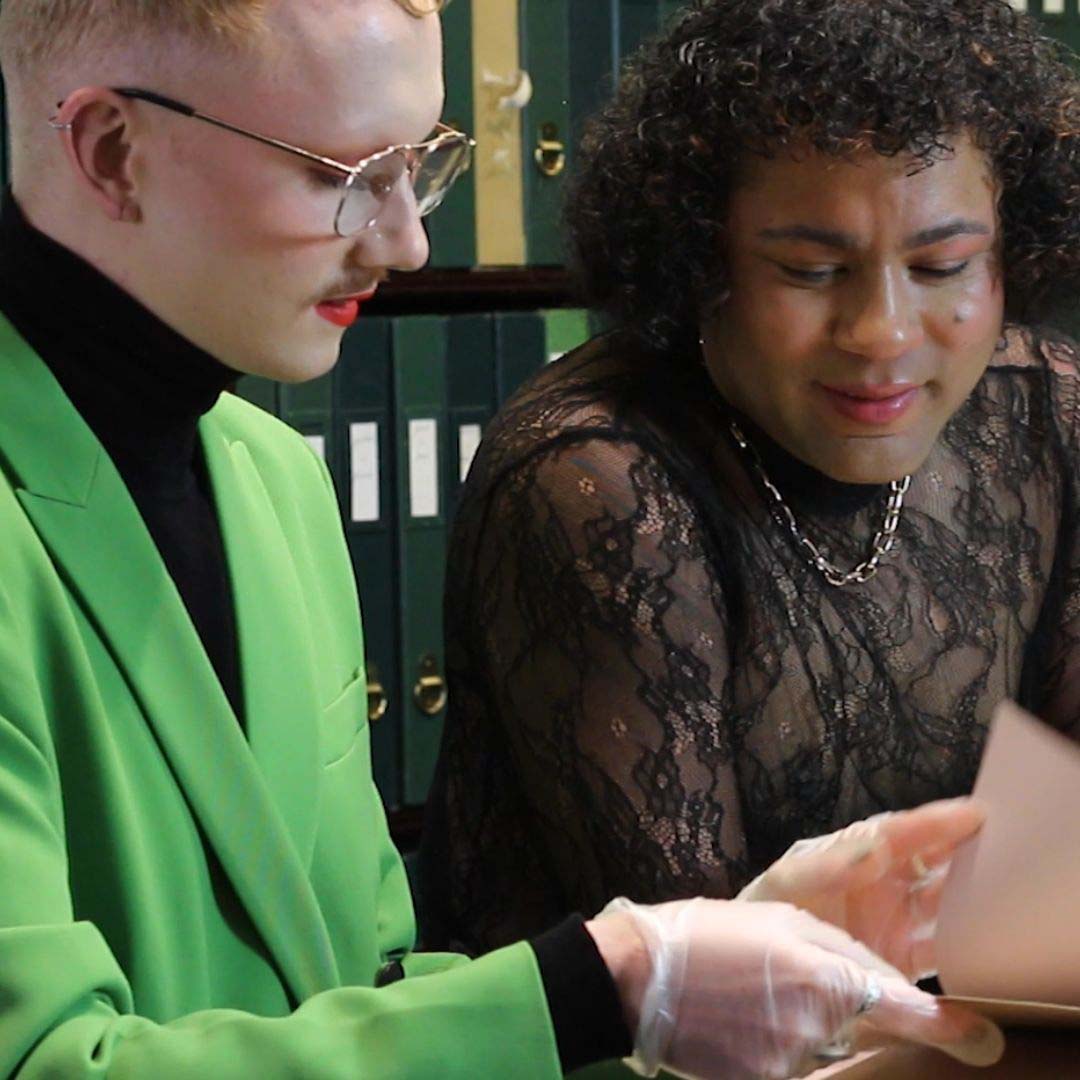
4. Attend a LGBTQ+ cultural event
- Fringe! Queer Film & Arts Fest hosts film and arts events from all over the world. These range from feature films to experimental installations, workshops, and lively debates to wild parties, and runs across East London’s cinemas, art galleries, pop-up venues and more. It takes place between 20 -25th September 2022.
- Bloomsbury’s Gays the Word bookshop hosts a range of events and provides community group resources.
- UK Black Pride is Europe’s largest celebration for African, Asian, Middle Eastern, Latin American and Caribbean-heritage LGBTQ+ people and takes place this year on the 14th of August 2022.
- L Fest is a three-day, not for profit festival for lesbians and their allies running from 22-25th of July 2022. It aims to create a visibly diverse and inclusive environment for both the emerging and established LBT+ communities through the fusion of music, comedy, art, film, discussion, sports, and a programme of participatory workshops.

5. Support an LGBTQ+ charity or non-profit organisation
- The Mosaic LGBTQ+ Young Persons Trust supports, educates, and inspires young LGBTQ+ persons by providing accessible activities, programmes and services that aim to empower community members, provide essential resources, advocate for young LGBTQ+ rights.
- The Colours Youth Network uplifts, supports and empowers young people of colour who are lesbian, gay, bisexual, trans, queer, intersex (QTIPOC) aged 16-25, to explore and celebrate who they are through meaningful connections to other young people and a team of experienced youth workers from the same community.
- Opening Doors is the only dedicated national charity connecting LGBTQ+ people over 50 with activities, events, support, and information.
- The Kaleidoscope Trust is a UK-based charity focused on fighting for the human rights of LGBT+ people across the Commonwealth. They fund, fight for, and empower those upholding the human rights of LGBTQ+ people by working with governments, and civil society organisations to bring about positive change in the lives of LGBTQ+ people everywhere.

Archival photo from the Bishopsgate Institute of Pride celebrations 1983. Photo credit: LGBTQ+ Archives, Bishopsgate Institute

